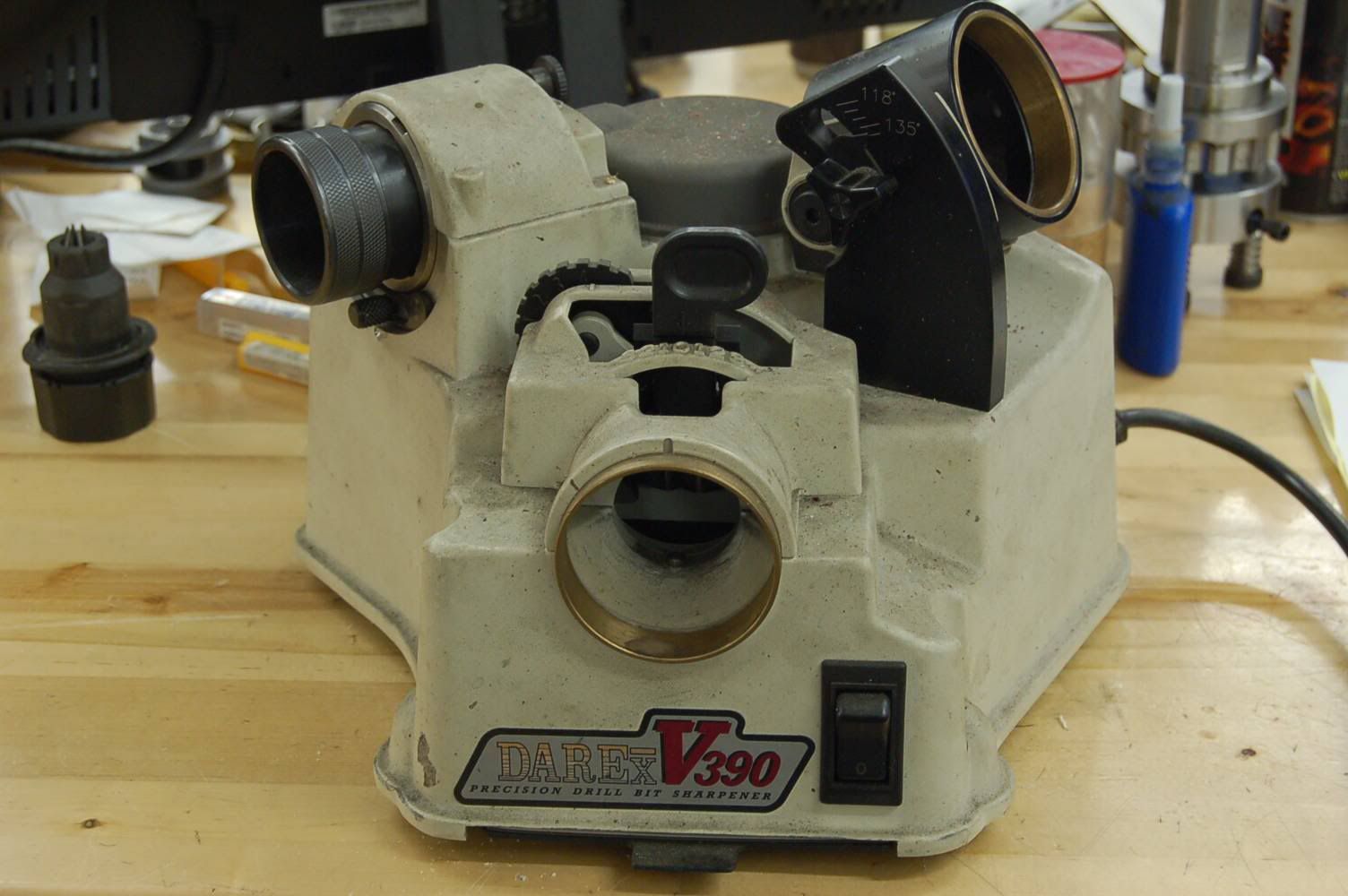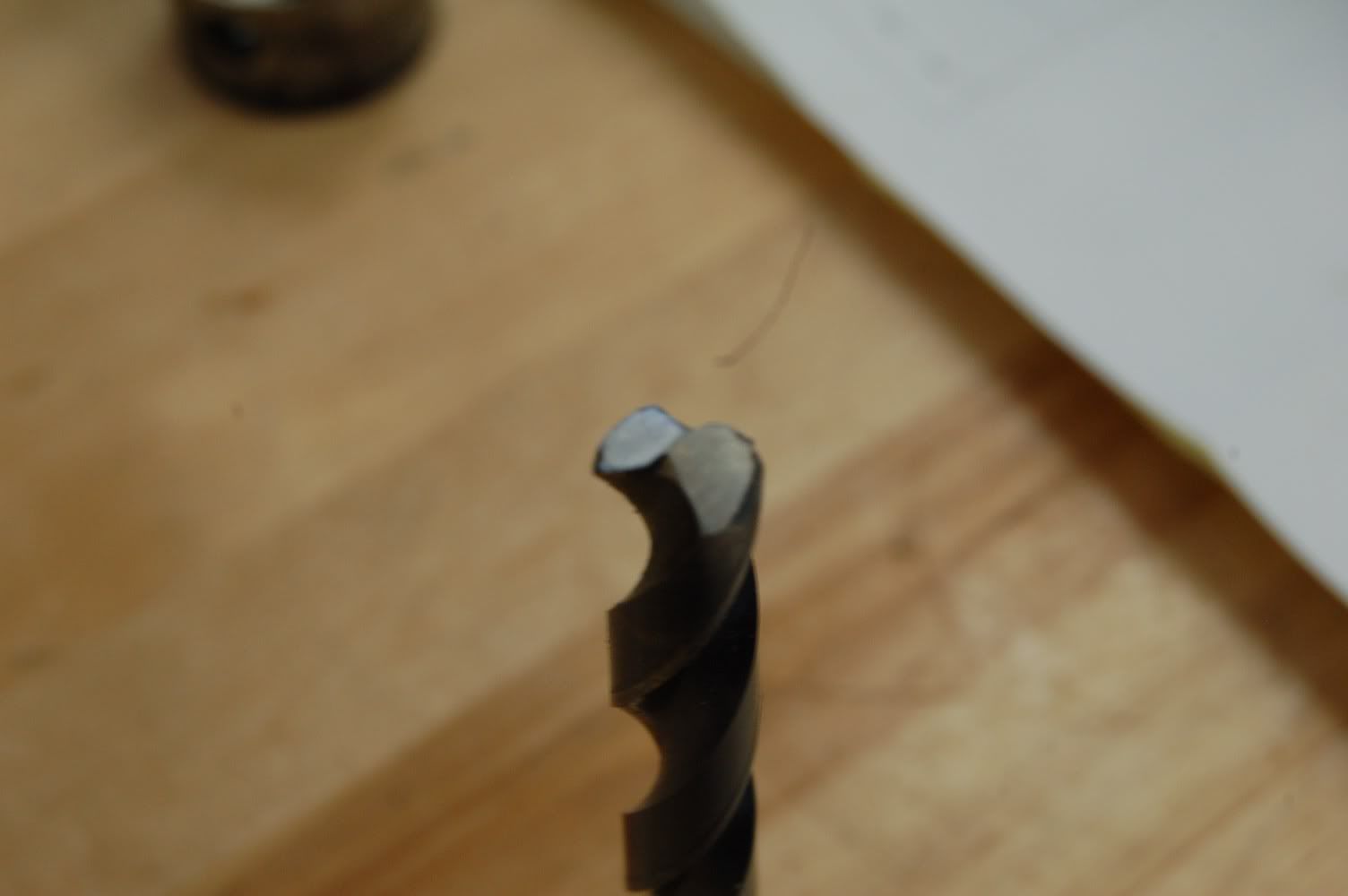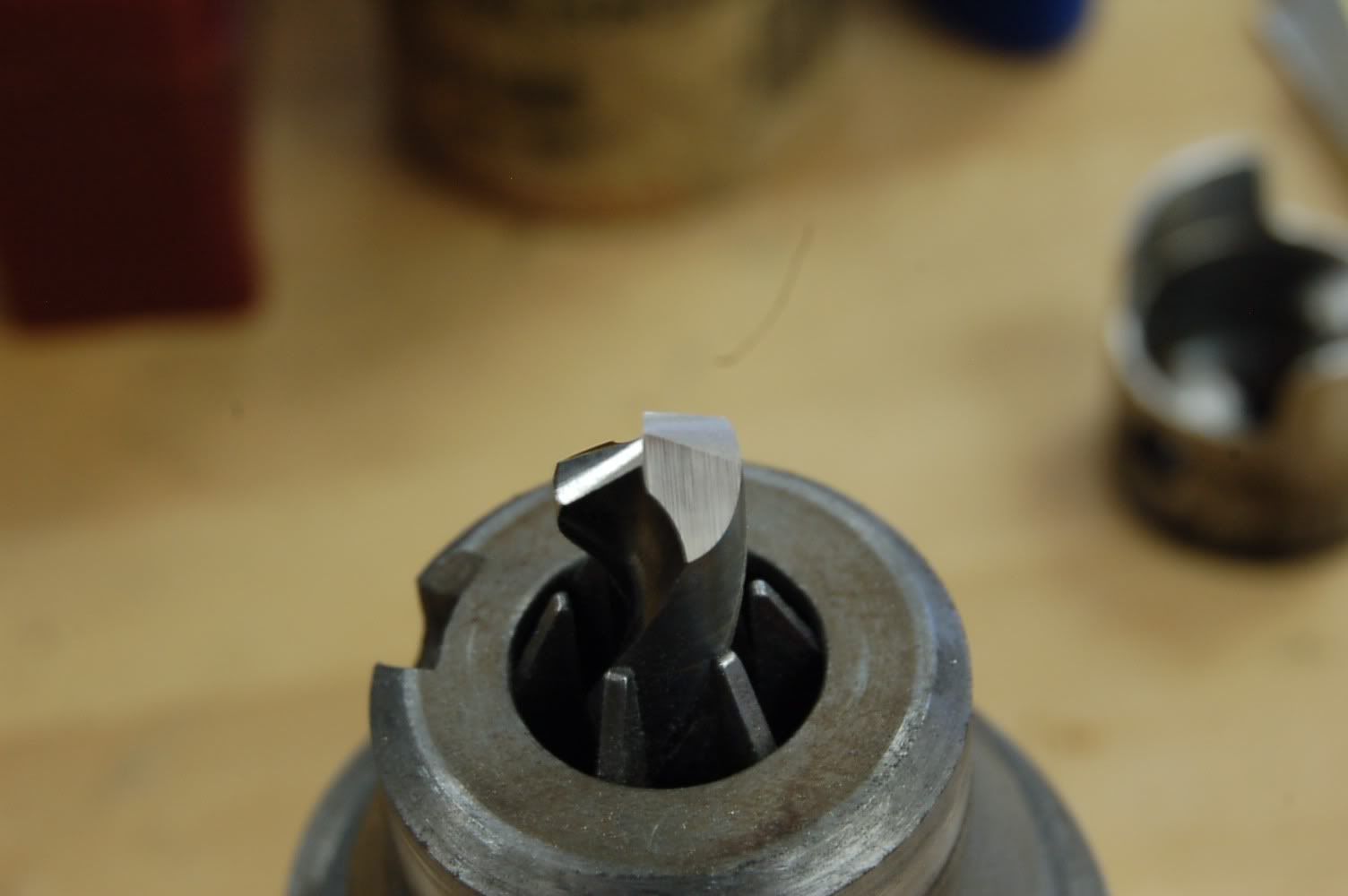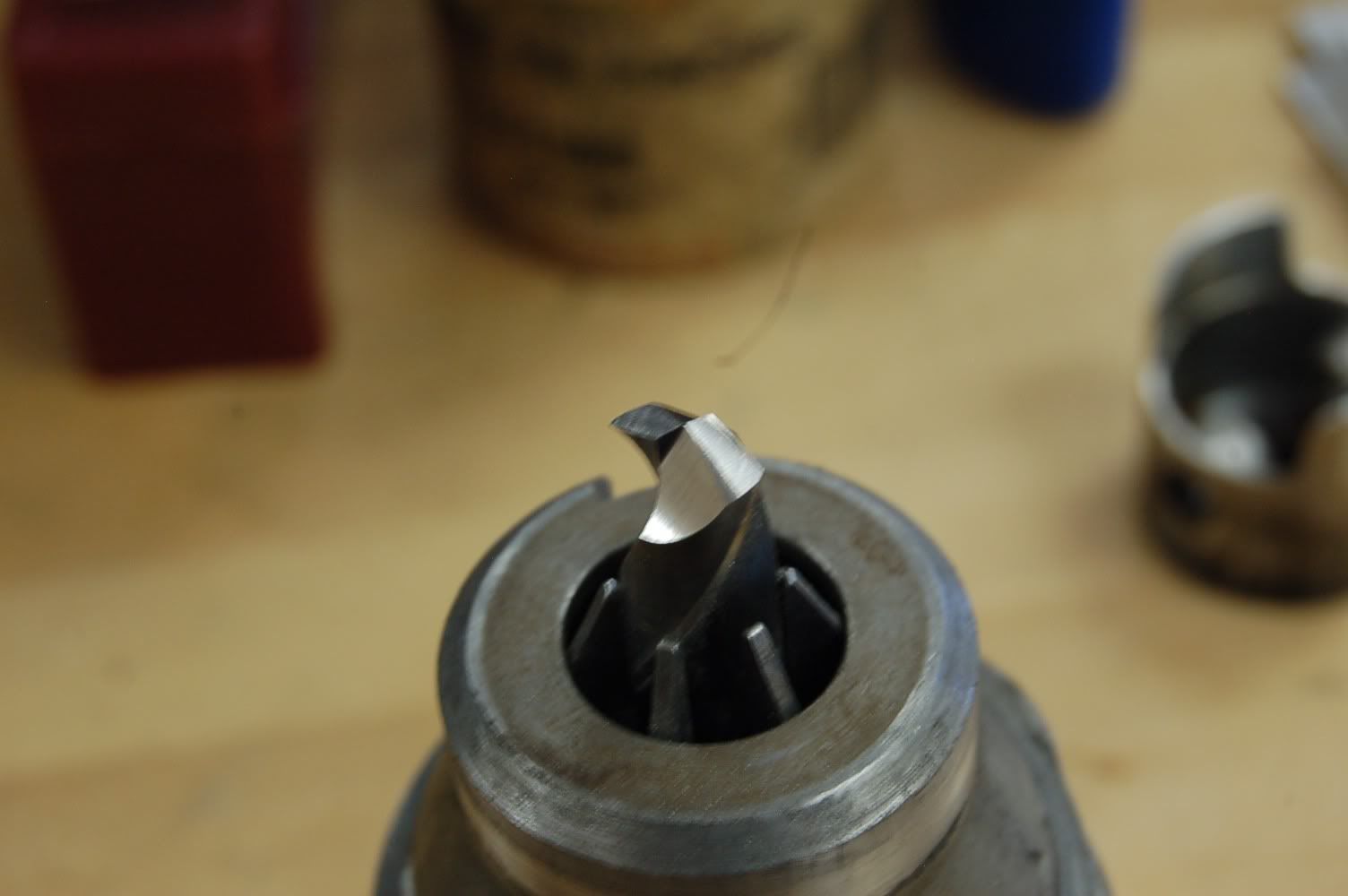+1 for the Drill Doctor.........A fantastic piece of plastic engineering! If you use it correctly, it will sharpen a drill bit much better than you could ever do it by hand. And much faster....And it uses a diamond wheel................AND you can split the point. A huge advantage in the type of work we do.
You are using an out of date browser. It may not display this or other websites correctly.
You should upgrade or use an alternative browser.
You should upgrade or use an alternative browser.
Drill Bit Sharpening
- Thread starter Gene Beggs
- Start date
brian roberts
New member
New drill bits cut great, and for quite some time BUT, when you...................
resharpen them, they cut GREAT again......but not as long as they did before. And they never will again. Unless the machine you use has a speed control on it, so you can slow down the wheel, so that it doesn't throw sparks when it touches the drill. Most machines don't have that feature, and most tool grinders get upset when you mention that. ".......know what I'm doing, I been grindin'........"
Try it, run two of them side by side, you'll see
Most guys will say they "don't have the time, I need it NOW". Sometimes it pays to,
"make haste like a turtle"
resharpen them, they cut GREAT again......but not as long as they did before. And they never will again. Unless the machine you use has a speed control on it, so you can slow down the wheel, so that it doesn't throw sparks when it touches the drill. Most machines don't have that feature, and most tool grinders get upset when you mention that. ".......know what I'm doing, I been grindin'........"
Try it, run two of them side by side, you'll see
Most guys will say they "don't have the time, I need it NOW". Sometimes it pays to,
"make haste like a turtle"
Centerfire
Member
Gene, i went to my professional.
here is what you need.
A drill point gage McMaster #1947A41 118°-135°
Medium soft Camel grinding wheel
A bright light.
That's all
Centerfire
here is what you need.
A drill point gage McMaster #1947A41 118°-135°
Medium soft Camel grinding wheel
A bright light.
That's all
Centerfire
N
NesikaChad
Guest
I was taught to sharpen a drill by:
First, ensuring the wheel is running concentric to the grinder. On a bench grinder used by a variety of people this can be a challenge in itself. I keep a chunk of old wheel in my box to use as a dresser. Flat work face and square corners with as little runout at possible is a must. For some reason, holding the wheel rather than resting it works better for truing up the wheel, least it does for me. Never really understood this.
From there is a function of always keeping the tool moving and ensuring your parallel to the existing cutting surface. It takes very little pressure. I was taught to hold the drill in such a way that when inspecting the edge, have the light cast a shadow (indirect light) on the drill cutting surface. Look at only one side. If it looks longer than the other, rotate the drill 180 and look again. If the same side still appears longer then the drill is pretty dern close to being on center. It's tough to explain this and I hope I'm doing allright. With practice, meaning jobber drills often end up as screw machine length when starting out, it'll come to you.
A healthy human eye has about a .002" resolution. That being said trust your eye if your vision is decent/correctable. Staring at it too long is about the same as staring down the sights too long. Things tend to go hell quickly. "If it looks right, it is right" kinda' works for this.
Don't rest the tool against anything other than your hand. It'll chatter the finish 9/10 times. Your hands dampen this mysteriously enough. Especially on a bench grinder with a wigglin wheel.
Again, having the wheel properly dressed is the hardest part really.
Splitting the point is a bit more work. The edge of the wheel has to be very crisp in order to do it right. Just takes practice though.
Good luck.
C
First, ensuring the wheel is running concentric to the grinder. On a bench grinder used by a variety of people this can be a challenge in itself. I keep a chunk of old wheel in my box to use as a dresser. Flat work face and square corners with as little runout at possible is a must. For some reason, holding the wheel rather than resting it works better for truing up the wheel, least it does for me. Never really understood this.
From there is a function of always keeping the tool moving and ensuring your parallel to the existing cutting surface. It takes very little pressure. I was taught to hold the drill in such a way that when inspecting the edge, have the light cast a shadow (indirect light) on the drill cutting surface. Look at only one side. If it looks longer than the other, rotate the drill 180 and look again. If the same side still appears longer then the drill is pretty dern close to being on center. It's tough to explain this and I hope I'm doing allright. With practice, meaning jobber drills often end up as screw machine length when starting out, it'll come to you.
A healthy human eye has about a .002" resolution. That being said trust your eye if your vision is decent/correctable. Staring at it too long is about the same as staring down the sights too long. Things tend to go hell quickly. "If it looks right, it is right" kinda' works for this.
Don't rest the tool against anything other than your hand. It'll chatter the finish 9/10 times. Your hands dampen this mysteriously enough. Especially on a bench grinder with a wigglin wheel.
Again, having the wheel properly dressed is the hardest part really.
Splitting the point is a bit more work. The edge of the wheel has to be very crisp in order to do it right. Just takes practice though.
Good luck.
C
Last edited by a moderator:
Gene Beggs
Active member
Thanks guys
Guys, I appreciate the information and advice; this is what I was looking for.
Looks like I need to spend a lot of time practicing. At one time, I was very intimadated by grinding HSS lathe tools; now I enjoy it. I guess the drill bit sharpening by hand will get better with practice. I understand the drill bit point and what we are trying to do with it but I've always had trouble keeping the angle right. I can see now how some kind of jig would be very helpful with that and I can also see the need for a drill sharpening guide to insure the cutting lips are the same length.
Gonna' spend some time turning jobber's length drill bits into screw machine length. I'll let you know how it goes.
Thanks for the help.
Gene Beggs
Guys, I appreciate the information and advice; this is what I was looking for.
Looks like I need to spend a lot of time practicing. At one time, I was very intimadated by grinding HSS lathe tools; now I enjoy it. I guess the drill bit sharpening by hand will get better with practice. I understand the drill bit point and what we are trying to do with it but I've always had trouble keeping the angle right. I can see now how some kind of jig would be very helpful with that and I can also see the need for a drill sharpening guide to insure the cutting lips are the same length.
Gonna' spend some time turning jobber's length drill bits into screw machine length. I'll let you know how it goes.
Thanks for the help.
Gene Beggs
T
TRA
Guest
Drill bits are perishable tooling, pitch em before ya stick half of one in something valuable.
S
stevec
Guest
After reading this thread for the last few days, I decided to try the Drill Doctor. It is on sale at Lowes for $98.(XPK model) You can buy another chuck that will let you sharpen up to 3/4" drills. As it comes in the box you can go up to 1/2". Also has the option to split point if you wish.
After reading the directions, I grabbed an old 3/8 drill out of my "junk" box(these are the bits I loan out) and give it a go. Takes only a few seconds to set up and grind and it was very sharp. I chucked up a piece of cold roll in the lathe and ran the drill in like it was butter. The drill was unusable before. I have sharpened bits by hand and can usually get a a good job, but sometimes have to try it twice. The Drill Doctor was quicker and easier.
I am not claiming it is better than any other method, just that it works great for me. I have already sharpend about 30 drills but I just bought it this morning.
Steve
After reading the directions, I grabbed an old 3/8 drill out of my "junk" box(these are the bits I loan out) and give it a go. Takes only a few seconds to set up and grind and it was very sharp. I chucked up a piece of cold roll in the lathe and ran the drill in like it was butter. The drill was unusable before. I have sharpened bits by hand and can usually get a a good job, but sometimes have to try it twice. The Drill Doctor was quicker and easier.
I am not claiming it is better than any other method, just that it works great for me. I have already sharpend about 30 drills but I just bought it this morning.
Steve
N
NesikaChad
Guest
I bought one this morning also! the 500x. $129.00 at the local hardware store.
About to sit down and fiddle with it.
About to sit down and fiddle with it.
S
stevec
Guest
I have a lot of sharp drills now! been playing all morning! It seems to get a better finish on larger drills but the smaller ones cut just fine.
Steve
Steve
N
NesikaChad
Guest
thus far not impressed. . .
I do a better job by hand I think.
I'll keep fiddling.
I do a better job by hand I think.
I'll keep fiddling.
4
4Mesh
Guest
For drills, I agree with Chad, I like mine done by hand. I don't have a drill doctor, so I can't compare to how that might work.
I do have an E90 endmill sharpener and I can tell ya, you WILL NOT sharpen an endmill like that baby does. However, it is not $129. When you touch one of them, you know it's not $129.
I do have an E90 endmill sharpener and I can tell ya, you WILL NOT sharpen an endmill like that baby does. However, it is not $129. When you touch one of them, you know it's not $129.
N
NesikaChad
Guest
Nothing like your "captain overkill".
Way back in the clutter between my ears I recalled a box somewhere/someplace that I'd picked up at an equipment auction.
BEHOLD: Darex V390. We'll see how this bugger does. If nothing else chicks might dig it more cause it looks cooler.

Way back in the clutter between my ears I recalled a box somewhere/someplace that I'd picked up at an equipment auction.
BEHOLD: Darex V390. We'll see how this bugger does. If nothing else chicks might dig it more cause it looks cooler.

Gene Beggs
Active member
Chad, I will be anxiously awaiting your report on the V390.
Thanks for your input on this thread.
Gene Beggs
Thanks for your input on this thread.
Gene Beggs
N
NesikaChad
Guest
I like it! Fer starters it doesn't sound like a dental drill on methamphetamine. Nice n quiet. Surface finishes are much nicer than what I was getting on the other unit. Machined collet, machined inserts for the various operation stations.
Much more robust. Perfect for a shop or serious hobby guy. If you can find one, buy it!
Chad
Much more robust. Perfect for a shop or serious hobby guy. If you can find one, buy it!
Chad
Gene Beggs
Active member
WOW! Chad, for you to say you like it that soon it must be good.
Thanks
Gene Beggs
Thanks
Gene Beggs
4
4Mesh
Guest
Laughing at Chads next toy...
At work we've got some behemoth of a thing thats on it's own stand, bout the size of a surface grinder and just as heavy. I tried one time using that to sharpen a drill and well, it was terrible. I did manage to grind the hell out of a silver and deming bit. Bout all I can say in the end was that it was shorter! One of the old guys who said they'd used it a lot in the past, tried to show me and made it even shorter yet. It wasn't any sharper.
One of the old guys who said they'd used it a lot in the past, tried to show me and made it even shorter yet. It wasn't any sharper.
I have no instruction on that machine and don't remember what name is on it. I'm pretty sure it's not a Darex. It's got a coolant pump and does its thing pretty clean, I simply have no idea how to set it up. I think it would be ok if you were in production and had many drills of the same size to do at once (per setup), but for one-offs, I think it's a bit too slow for any serious work.
At work we've got some behemoth of a thing thats on it's own stand, bout the size of a surface grinder and just as heavy. I tried one time using that to sharpen a drill and well, it was terrible. I did manage to grind the hell out of a silver and deming bit. Bout all I can say in the end was that it was shorter!
I have no instruction on that machine and don't remember what name is on it. I'm pretty sure it's not a Darex. It's got a coolant pump and does its thing pretty clean, I simply have no idea how to set it up. I think it would be ok if you were in production and had many drills of the same size to do at once (per setup), but for one-offs, I think it's a bit too slow for any serious work.
N
NesikaChad
Guest
Best thing I like about this little unit; It's all METAL. Cast housing and machined parts. No injection molding plastic on this bugger.
Now I gotta dig up my receipt to take the other one back to the hardware store.
Knee deep in trigger parts tonight gents. Long cycle time for this particular part so I got time to BS.
See ya!
Now I gotta dig up my receipt to take the other one back to the hardware store.
Knee deep in trigger parts tonight gents. Long cycle time for this particular part so I got time to BS.
See ya!
D
Dennis Sorensen
Guest
Darex V390.. about $1300... weighs about 25 pounds...
N
NesikaChad
Guest
Here's a before/after with the Darex.
There's a mass grave of drills here and this was by far the worst of the bunch.

After, took about 5 minutes to set it all up and get what I was after.


There is a "touch" to using this. Takes a little fiddling to get it right, but it does do a pretty dern good job. It better for what they cost!
If you can pick one up, I say DO IT.
Chad
There's a mass grave of drills here and this was by far the worst of the bunch.

After, took about 5 minutes to set it all up and get what I was after.


There is a "touch" to using this. Takes a little fiddling to get it right, but it does do a pretty dern good job. It better for what they cost!
If you can pick one up, I say DO IT.
Chad
Gene Beggs
Active member
Thanks Chad. Looks good to me.
Gene Beggs
Gene Beggs

